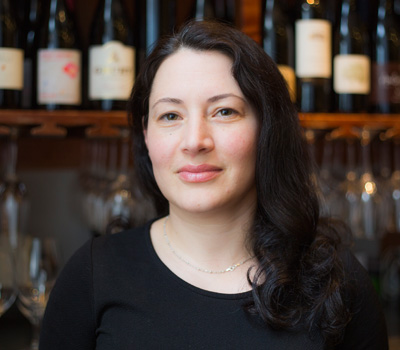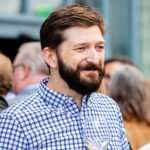Sarah Trubnick and Carolyn Johnson first met when they worked at the Hidden Vine, a little basement wine bar in San Francisco’s scruffy Tenderloin district. When that space became available, they convinced the landlord to let them launch their own project there—with no deposit. What began as a small, bootstrapped operation has expanded to two Barrel Room locations—one in Oakland and one in SF’s Financial District—with full kitchens and intensive regional food and wine focuses that change every quarter. This past year, Trubnick, a dedicated Europhile, put together her first domestic focus. She says that it proved to be one of her most challenging and rewarding efforts yet.


Coast to Coast
Ever since we had the little bar, I think people really liked us for our eclectic wine list. The idea from beginning was education. If we do Italy, we’ll have classics, but also producers and grapes they haven’t heard of, to show that there’s more than Chianti, more than Super Tuscans, more than Barolo. This was our first domestic focus, and it was a little scary for me, because my expertise is France, Italy, Spain. I know even Croatian wine better than domestic. But now there are so many good wines at home; it’s not all just big, overblown Napa cabs.
I decided that I would focus on the West Coast people who were really influential in the wine industry—big names but not necessarily huge producers. To show, for example, Leonetti from Walla Walla—they founded the commercial wine industry there. But then also [Gramercy Cellars wines from] Greg Harrington, who was the youngest Master Somm at age 26, and also brought some fame to this region.
But now every state makes wine. I looked up every single state except Alaska and Hawaii, because shipping from there would get out of control. I found five producers that I though would represent different areas of each state well. Then I said: I know you don’t have distribution in California, but would there be a way to get samples of your wine? Some said no because they had no distribution, or they had a hundred cases of wine total, but I got a lot of really interesting wines in. I found Saltwater Farm from Connecticut, both a sauvignon blanc and a merlot, and we’ve completely sold out of all their merlot. They just sold their last two cases to us. There’s a place called Westport Rivers that does sparkling wines out of Massachusetts. They’re doing Champagne-style sparkling wine. We’re pouring [Westport Rivers’] 2001 Blanc de Blancs. They gave us a killer deal because they were excited to get it on a wine list in San Francisco, and people who taste it go crazy for it. We’re pouring it alongside Iron Horse and Gruet.
There were many other wines I found that didn’t make it onto the list, but were also very good. There was a producer—I wanted to use this so bad—they make a blueberry wine. The guy studied in Burgundy, and it’s made completely dry and aged completely in French oak. It was so good. He didn’t make much of it, so we couldn’t do it. But we poured [the sample bottle] for sales reps who came in for tastings and they all said it was syrah, things like that. They never guessed it wasn’t a grape wine. And I would drink it for dinner. So what if it’s a different berry?
I learn something every time I put together a new feature, but on this one, I think I learned the most.
On the Caduseus Anubis from New Mexico
I think it struck a nerve with people in a roundabout way. That’s made by Maynard James Keenan, the lead singer of Tool and many other projects. I wanted a Southwest reds flight—Texas, New Mexico, Arizona. When I tasted it I thought: we can do this. It’s not super-fruity, not sweet, and completely dry. Then he came in for dinner, and I was kind of blown away, because I’m a huge Tool fan. He does all the viticulture, all the pruning, he planted the vineyard, he knows his stuff. He sat there talking with me for two hours about the science of winemaking and grape growing. I didn’t expect that! I thought he would be some famous guy saying, “My winemaker…my viticulturist….” But this is actually what he wants to do with the rest of his life, and I think the quality of the wines shows that he’s doing this for real. I liked it even more after talking to him.
Longtime senior editor at Wine & Spirits magazine, Luke now works for the Stanford Technology Ventures Program.
















